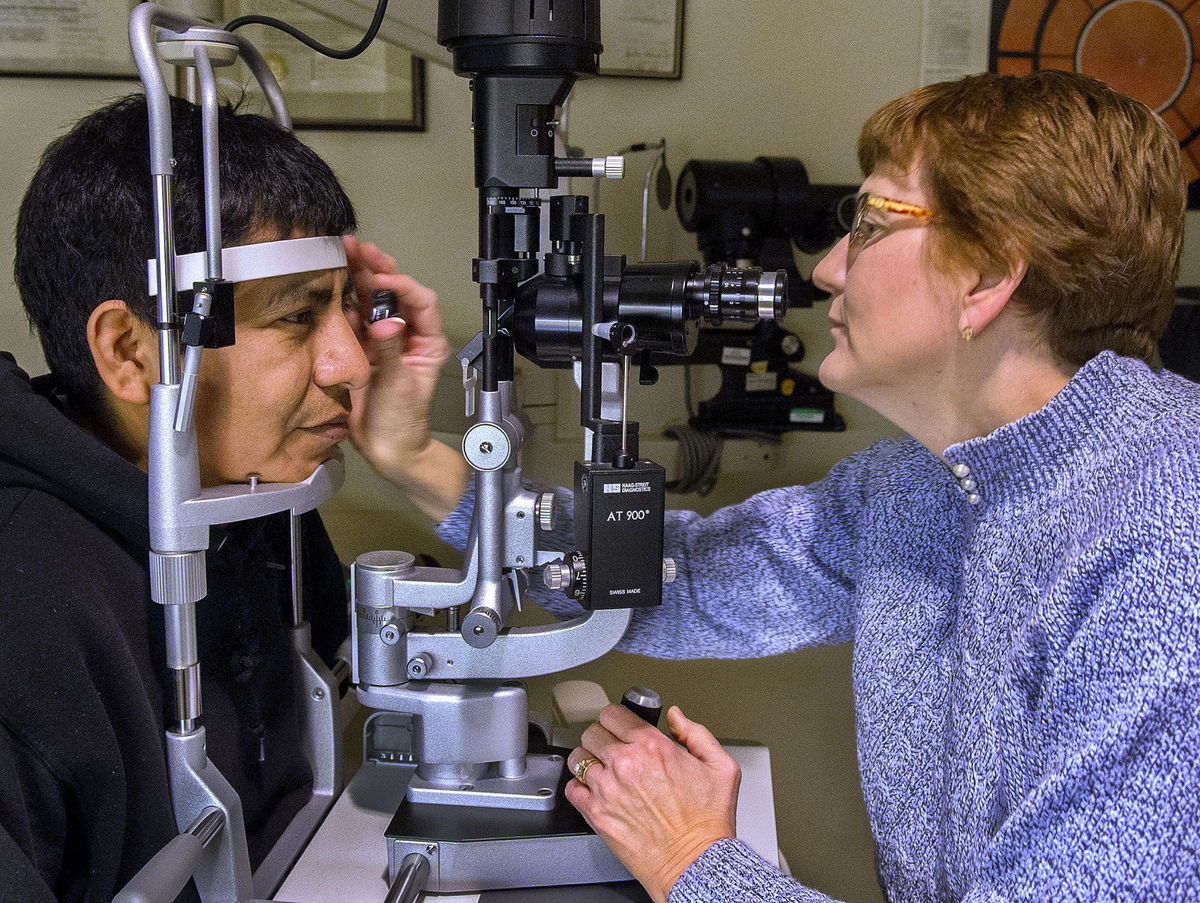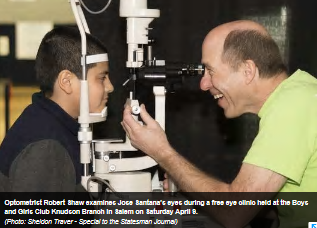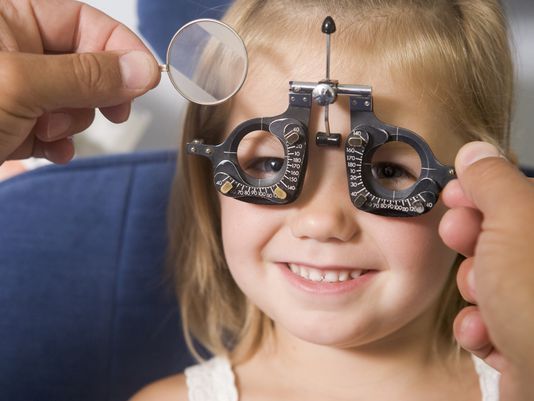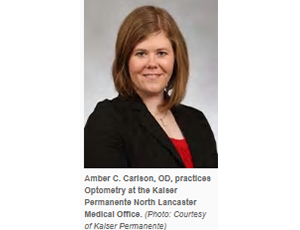EYE HEALTH IS OUR FOCUS

Plenty of people across Cowlitz County used Martin Luther King Jr. day to give back to their community.
As part of its annual MLK Day of Service, Cowlitz County AmeriCorps members focused their efforts Monday on Longview homeless shelter Community House on Broadway, the Longview women and children’s Emergency Support Shelter and on local homeless camps.
Even without a working boiler, more than 65 volunteers from AmeriCorps and Kaiser Permanente installed subflooring in the upstairs hallway at Community House and helped organize food and supplies at the shelter. The shelter has been without heat since the boiler broke down earlier in the month. Together, volunteers put in an estimated 520 community service hours Monday.
They made homemade playdough for kids at the homeless shelter, watched the kids’ movie “Zootopia” and painted with them, too.
At the Emergency Support Shelter, volunteers helped revamp the outdoor garden, delivered food, clothing and other supplies to local homeless camps, hosted a presentation about MLK Day and helped clean and organize supplies at the Love Overwhelming warming shelter.
As part of Kaiser Permanente’s MLK Day of Service, the company offered free vision services for low-income patients at six clinics throughout the region, including one at Vision Essentials Clinic in Longview. Optometrist Dr. Barbara Berger and staff treated 22 patients who were pre-selected from Community Health Partners in Longview.
When necessary, the office also fitted patients for eye glasses, which patients are expected to receive in a few weeks, said Colleen Hermann-Franzen, a Kaiser spokeswoman.
“One patient was extremely grateful because he broke his glasses a year and a half ago, and he’s been wearing his son’s glasses ever since. He hasn’t had the money to get a new eye exam or new pair of glasses. Now he will get an updated exam and new eyeglasses for free, thanks to Kaiser Permanente,” Hermann-Franzen added in an email.
More than 200 free eye exams provided to Salem residents in need – Salem Statesman
This story is produced and presented by our sponsor

More than 200 adults and children received free eye exams on Saturday at the Boys and Girls Club of Salem, thanks to a collaboration between Kaiser Permanente and 5 other community partners.
This was the third year Kaiser Permanente has participated in the community program. It was the first year exams were provided for both adults and children. In the first two years, in 2013 and 2014, only children received free exams and eye glasses.
“It really is a community effort,” said Dr. Thomas Gibbs, the associate chief of optometry for Kaiser Permanente Northwest. “I was excited this Saturday when we provided care to adults as well and that we’ve continued to grow the program. This weekend was a great success.”
Jodi Loper, the health and dental services director with the Boys and Girls Club of Salem and Marion and Polk counties, said Saturday’s event went well.
“We are thankful to have a compassionate partner (Kaiser Permanente) spending their time to provide corrective vision services to 200 grateful youth and adults,” Loper said. “It was a great day, especially for those who need us most.”
Providing some background to how it all started, Dr. Gibbs said in 2013 the Boys and Girls Club reached out to Kaiser Permanente. The concern was that the uninsured were not getting proper eye care.
“Kaiser Permanente stepped up to the challenge, and I am happy to say we have continued to do so ever since,” Dr. Gibbs said. “We not only provide the exams, but we also work with other organizations and clinics in the community to refer patients who need follow-up care.”

Diabetes is the leading cause of blindness among adults between the ages of 20 and 74. People with diabetes are vulnerable to diabetic retinopathy, a disease that can cause blood vessels in the retina to swell and leak, sometimes even closing completely. It can also cause the growth of abnormal blood vessels on the retina itself.
The alarming thing is, diabetic retinopathy is asymptomatic in the early stages. Symptoms may not appear until damage has been done to the retina, requiring treatments like laser surgery, ocular injections, or replacing the vitreous, the fluid that fills the eye. That’s why it’s important that people with diabetes get a comprehensive eye exam every year. 25% of people with diabetes do not get the recommended exams, which is unfortunate because 90% of diabetic-related blindness is preventable through early detection, timely treatment and follow-up care.
Aside from getting annual eye exams, what can people with diabetes do to prevent diabetic retinopathy? The most important thing is to practice good blood glucose control. It’s the elevated levels of glucose that cause damage to the eyes, so it’s important to work with your doctor to keep your glucose levels at appropriate levels. Take the medication prescribed to you, follow your recommended diet carefully, and exercise regularly.
I just saw a patient who has retinopathy and was admittedly not controlling her blood sugars very well, but she has been working very hard with her primary care doctor. Now, her A1C (the test that shows the average levels of blood glucose over the past three months) level has gone down and the health of her retinas has improved in just the course of two years.
Other than high glucose levels, kidney disease, high blood pressure, smoking and pregnancy are also risk factors, so make sure that you are addressing those issues. Talk to your doctor about keeping your blood pressure under control. Avoid drinking and smoking.
The good news is that while 4.2 million people with diabetes have some form of diabetic retinopathy, it can be easily managed if it’s caught early. Remember, healthy diabetic eyes come from healthy diabetic bodies. Keeping your blood glucose under control and getting an eye exam every year can prevent you from developing diabetes-related blindness.
-- Eric Leavitt, OD, practices at the Kaiser Permanente North Lancaster Medical Office. If you have diabetes and haven’t had a diabetic eye screening in more than a year, contact your eye doctor today to be screened. Kaiser Permanente members may go to any one of our ten Vision Essentials locations – no appointment needed.

Another school year is here. It’s time to shop for supplies, stock the house with items for healthy lunches, and make appointments for sports physicals. It’s also the time of year to prepare our children for success in the classroom by taking care of their eye health. August is Children’s Eye Health and Safety month, because the back-to-school season is a great time to remember how important vision is for children at school. 80% of what children learn is through vision, so eye problems can have a huge impact on a child’s success in school, not just academically but also socially and in sports.
According to the American Optometric Association, one out of four children has a vision problem that may interfere with learning and 50% of children flagged as having problems learning have an undetected vision problem such as their eyes working too hard, lazy eye, or vision that is not clear. Good vision is a learned process, so the longer a child goes undiagnosed, the more the brain learns with this deficit, so problems can take longer to correct as the child gets older and further along in school.
This means that it’s very important for every child to get at least one eye exam prior to entering preschool, even if parents haven’t noticed any symptoms. Young children have a hard time articulating blurry or double vision because that’s the only vision they have ever known. It’s difficult to pinpoint an eye problem in young children just by observing them; that’s why many parents are surprised to learn that their three- or four-year-old needs glasses. It’s so important that children get an early start on eye health that the American Optometric Association recommends that a baby’s first eye exam happens at six months. They offer a program called InfantSEE that offers no-cost exams for babies between 6 and 12 months of age.

Children get eye screening both at school and during well-child check-ups, but screenings look at different things than a comprehensive exam. A child can have 20/20 vision and still have eye health or eye teaming issues, making a thorough exam necessary.
Aside from vision, eye health also means protecting the eyes from injury. According to the National Eye Institute, eye injuries are the leading cause of preventable childhood blindness. Most of these injuries come from sports. The use of eye protection is highly recommended in all sports to protect the eyes from sports equipment, fingers and blunt trauma.
Finally, another area of concern that is only getting more and more common in our digital world is digital eye strain. About 65% of children spend two or more hours on a digital device each day and the blue light emitted by these devices can contribute to eye strain and fatigue. Limiting screen time may be easier said than done in our digital age, but it’s important to remember the 20/20/20 rule: For every 20 minutes of screen time, take 20 seconds to look at least 20 feet away.
As we enter another school year, an eye exam for kids should be on our checklist with backpacks and physicals.
Amber C. Carlson, OD, practices Optometry at the Kaiser Permanente North Lancaster Medical Office.
It’s not just about the skin- Cover your eyes from harmful rays – Eric Leavitt, OD

While we hear a lot about protecting your skin from the sun, Dr. Eric Leavitt, an optometrist with Kaiser Permanente, stresses that it’s equally important to protect your eyes from the sun’s harmful rays.
“It’s important to take any UV (ultraviolet) exposure to the skin and the eyes very seriously,” said Leavitt, who practices at the North Lancaster Medical Office in Salem. “We should be putting as much energy in protecting our eyes as we do in protecting our skin. This is an issue for all ages. If you look at children, they spend a lot of time outside. It’s just as important to protect your eyes as children as it is for adults.”
There are three types of UV radiation. UV-C is absorbed by the ozone layer and does not present any threat. However, UV-A and UV-B radiation can have long-and short-term negative effects on the eyes and vision.
If the eyes are exposed to excessive amounts of UV radiation in a short period time, a person can experience what is described as a “sunburn of the eye,” otherwise known as photokeratitis, which can be very painful.
Besides photokeratitis, too much exposure to the sun can be damaging to the eyes. Some of the dangers Include:
- Cataract development: A cataract is a clouding of the eye’s natural lens, which lies behind the iris and the pupil. Cataracts are the most common cause of vision loss in people over age 40, and is the principal cause of blindness in the world.
- Age-related macular degeneration: Age-related macular degeneration (AMD) is a deterioration or breakdown of the eye’s macula. The macula is a small area in the retina — the light-sensitive tissue lining the back of the eye. The macula is the part of the retina that is responsible for your central vision, allowing you to see fine details clearly.
- Pterygium: Pterygium is a growth on the cornea (the clear front window of the eye) and the conjunctiva — the thin, filmy membrane that covers the white part of your eye (sclera). A pterygium (also known as surfer’s eye or farmer’s eye) is a triangular-shaped growth of fleshy tissue on the white of the eye that extends over the cornea. This growth may remain small or grow large enough to interfere with vision. A pterygium can often develop from a pinguecula.
- Pinguecula: A pinguecula is a yellowish patch or bump on the conjunctiva, near the cornea. It most often appears on the side of the eye closest to the nose. It is a degenerative change in the normal tissue and is similar to a callus on the skin.
Leavitt said there are plenty of preventative measures one can take to protect the eyes from excess sun exposure. Those preventative measures include wearing sunglasses that include the following:
- Sunglasses that block out 99 to 100 percent of both UVA and UV-B radiation. Leavitt said the sunglasses don’t have to be expensive. To make sure a pair of sunglasses will provide proper protection, Leavitt said you can take them to your eye doctor for testing.
- Screens out 75 to 90 percent of visible light.
- Has lenses that are perfectly matched in color and free of distortion.
- Lenses that are gray for proper color recognition.
- Sunglasses that are the proper size to shield the eyes properly. This means sunglasses that shield the eyes, eyelids and surrounding areas.